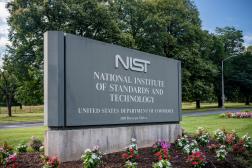According to a new report from the National Institute of Standards and Technology, it is becoming easier to identify people by acquiring pictures of their eyes.
NIST researchers evaluated the performance of iris recognition software from 11 different organizations and found that some techniques produced very rapid results, though speed was often at the cost of accuracy.
Iris recognition, a form of biometric identification based on noncontact imaging of the complex texture in an individual’s iris, has been purported to be both fast and accurate, claims that had not been validated until now.
The Iris Exchange (IREX) III report is the first public and independent comparison of commercially available algorithms that use iris recognition for the challenging task of finding an individual match within a large database of potential identities, according to the agency.
Previous published studies only used single algorithms or considered “one-to-one” verification, in which an individual claims an identity and the software then attempts to confirm whether the claim matches a specific record.
NIST evaluated 92 different iris recognition algorithms from nine private companies and two university labs, all of which submitted software to an open competition held by NIST. The task was to identify individuals from a database of eye images taken from more than 2.2 million people.
“If, for example, you are trying to pick out a fugitive who is trying to cross a national border, you need to know your software can identify that person from among millions of records,” says Patrick Grother, a scientist in NIST’s Information Access Division. “This ability to pick out a ‘needle in a haystack’ quickly and accurately is crucial, and we found some algorithms can search a haystack thousands of times larger than others. This is important because often there is no corresponding record, no needle to be found.”
Note: The headline of this story was changed after publication to more correctly reflect the story.






